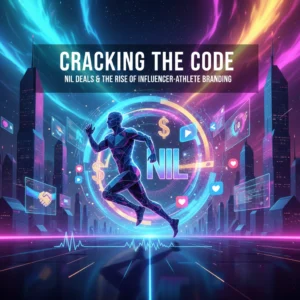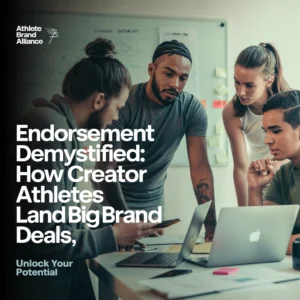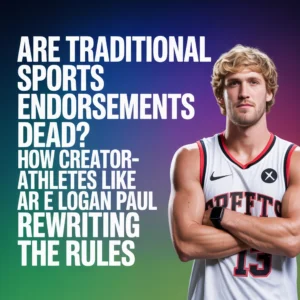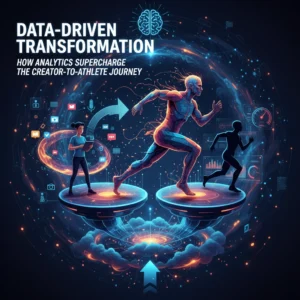Brain Gains: How Neuroplasticity Powers the Creator-to-Athlete Transformation
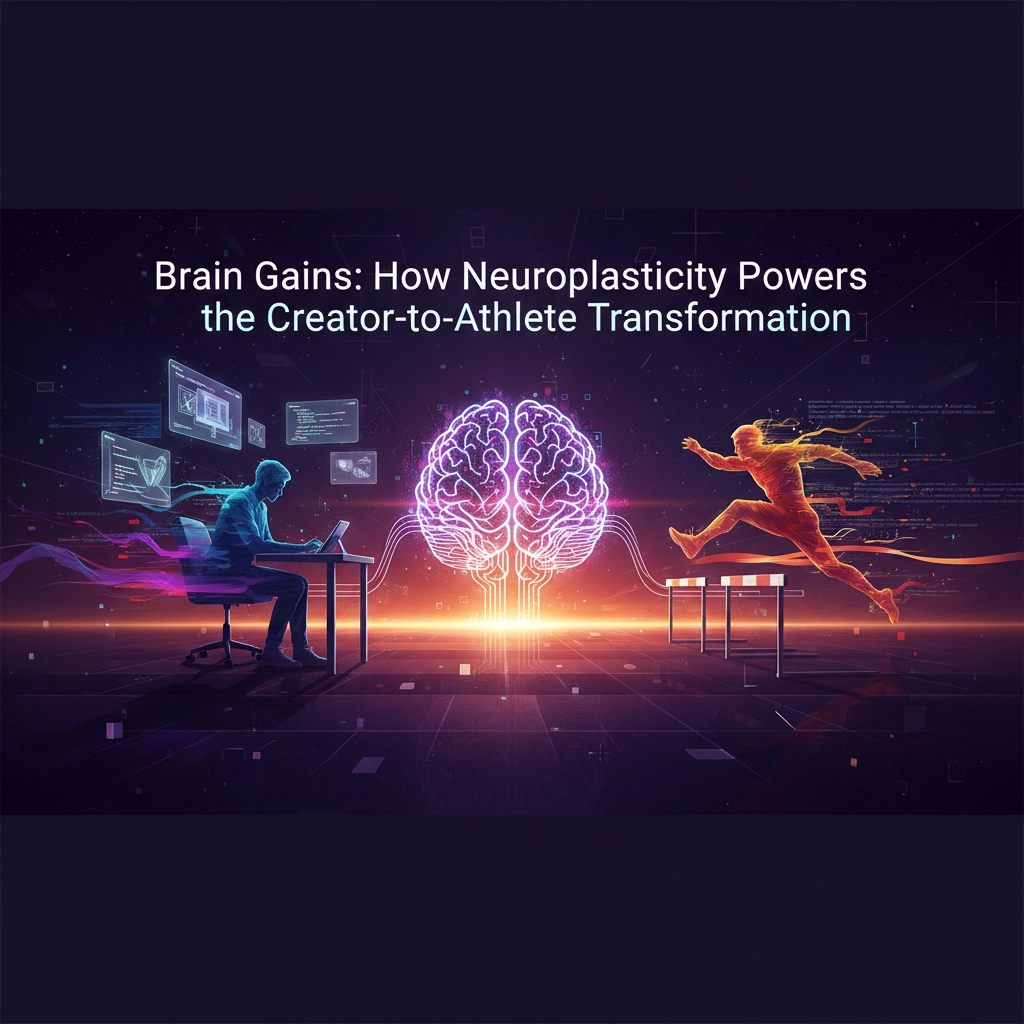
Ever wonder how Logan Paul went from making vlogs to boxing Floyd Mayweather? Or how MrBeast transformed from a bedroom content creator to someone who could hang with professional athletes? The answer isn't just hard work or good genetics: it's your brain's superpower called neuroplasticity.
Here's the thing: your brain is literally rewiring itself every time you learn something new. And when creators dive into athletics, this rewiring process goes into overdrive, creating new neural pathways that transform not just their bodies, but their entire approach to performance.
What Is Neuroplasticity (And Why Should You Care)?
Think of neuroplasticity as your brain's ability to renovate itself. Just like you can knock down walls in your house and create new rooms, your brain can form new neural connections and strengthen existing ones based on what you do repeatedly.
When you were a creator spending 12 hours a day editing videos, your brain built massive neural highways for visual processing, pattern recognition, and creative problem-solving. But those pathways for athletic movement? They were basically dirt roads.
The game-changer: those dirt roads can become superhighways with the right training approach.
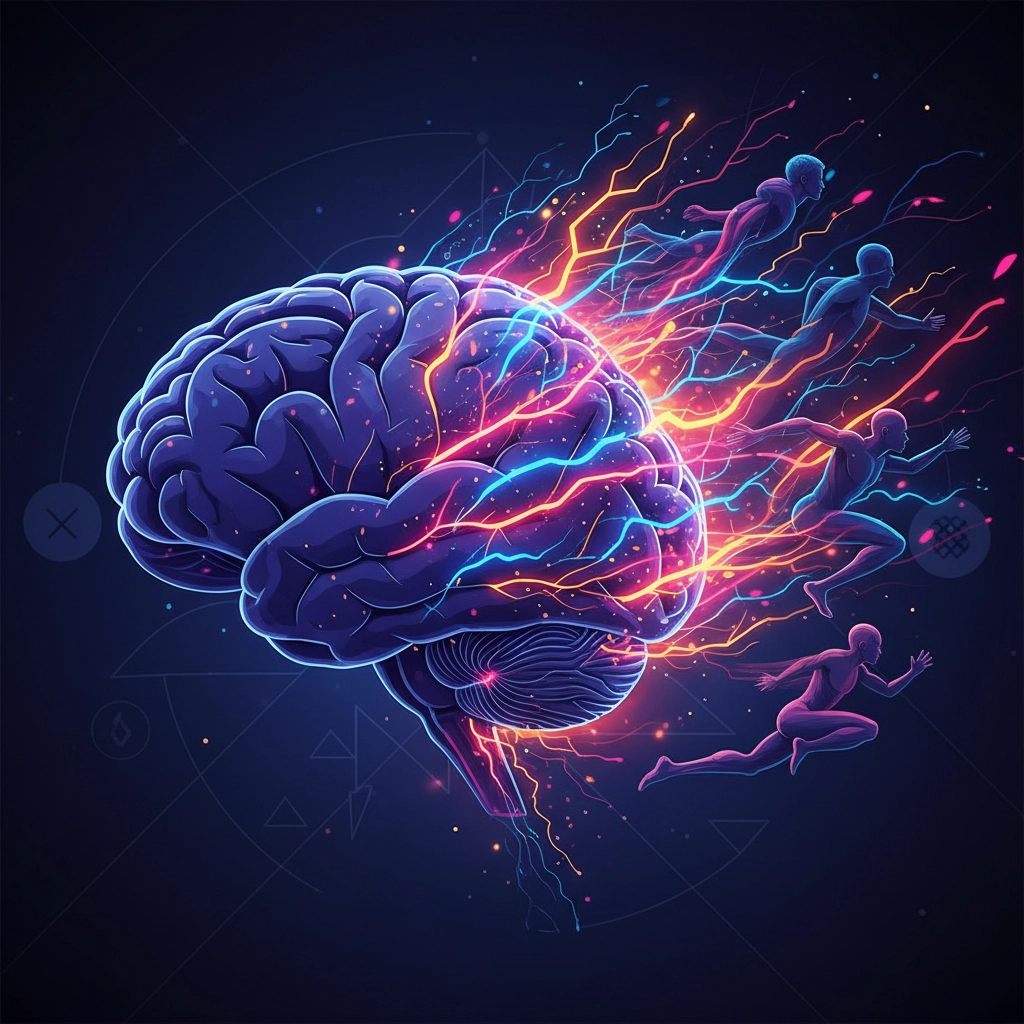
The Three Phases of Creator-to-Athlete Brain Training
Phase 1: The Learning Storm
Your first month training is brutal. Your brain is literally creating new synapses: connections between neurons: from scratch. Every tennis serve, every boxing combination, every sprint feels like you're thinking through molasses.
This is normal. Your motor cortex (the brain region controlling movement) is frantically trying to coordinate with muscle groups it's never had to manage before. The frustration you feel? That's neuroplasticity in action.
Phase 2: The Efficiency Build
Around weeks 4-8, something clicks. Movements that required intense concentration start feeling more natural. This is "long-term potentiation": repeated activity has strengthened those new neural pathways, making communication between neurons faster and more efficient.
Phase 3: The Automation Zone
By month 3-6, you've hit what athletes call "muscle memory" (though it's actually brain memory). Your neural pathways are so well-developed that complex movements happen automatically, freeing up mental bandwidth for strategy and creativity.
Real Examples: How Mental Training Reshapes Performance
Take Jake Paul's boxing journey. His early fights showed classic "creator brain" patterns: overthinking, visual processing dominance, but poor spatial awareness. Through neuroplasticity-focused training, he developed:
- Enhanced proprioception: Better awareness of body position in space
- Faster decision-making: Reduced time between seeing an opportunity and acting
- Improved stress response: Better emotional regulation under pressure
The key was combining traditional athletic training with specific neuroplasticity exercises that bridged his existing creative skills with new athletic demands.
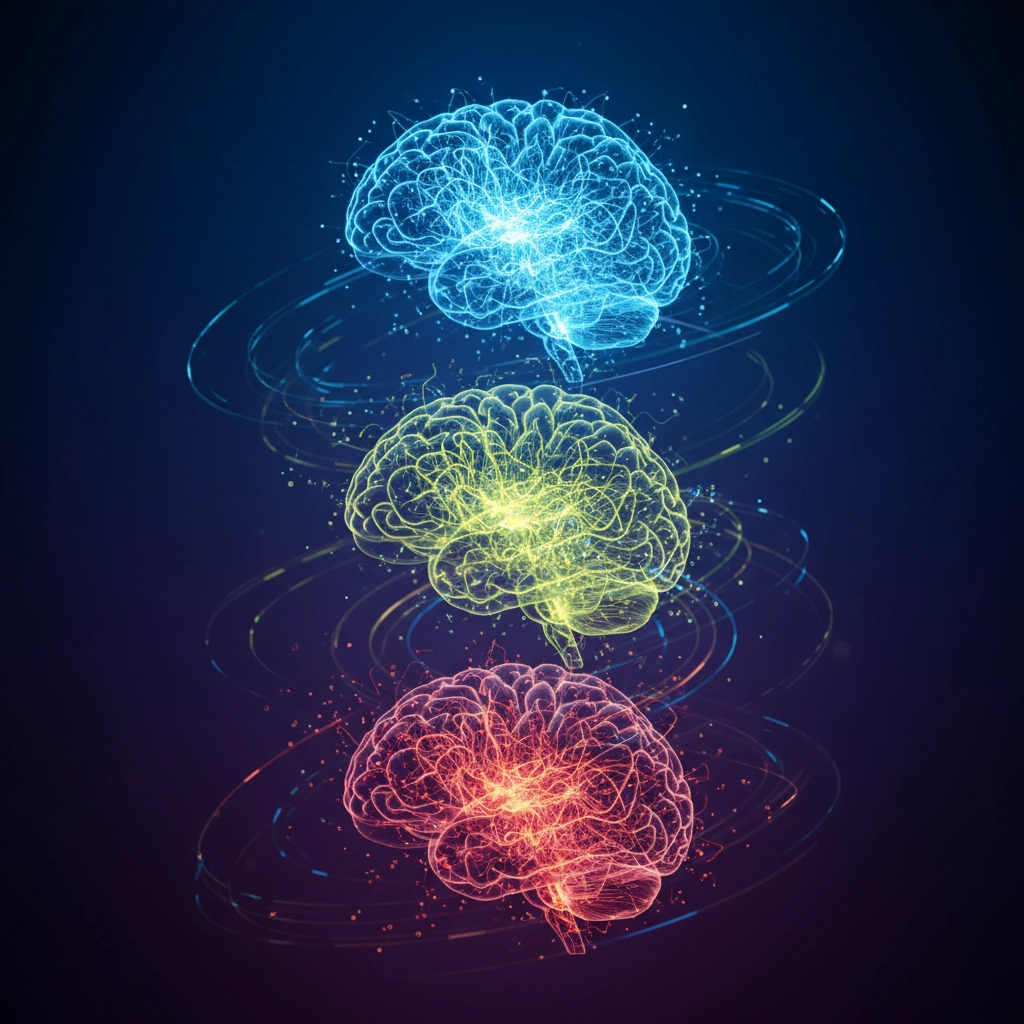
The Creator Advantage: Why Your Brain Is Already Primed
Here's what most trainers miss: creators already have several neuroplastic advantages that traditional athletes don't.
Visual Processing Power
Years of editing have given you superior pattern recognition. You can spot visual cues: an opponent's tell, a gap in defense, the perfect moment to strike: faster than someone who's never trained their eyes to catch micro-details.
Adaptation Speed
Creating content means constantly learning new platforms, formats, and trends. Your brain is already wired for rapid skill acquisition. This transfers directly to athletic learning.
Performance Under Pressure
Going live to thousands of viewers? That's pressure training. Your stress response system is already calibrated for high-stakes performance.
Practical Neuroplasticity Training for Creator-Athletes
1. Cross-Training Your Brain
Don't just train your sport: train your brain's ability to adapt. Spend 20 minutes daily on activities that challenge different neural pathways:
- Juggling (hand-eye coordination)
- Balance board exercises (proprioception)
- Reaction time apps (processing speed)
2. Visualization with a Creator Twist
Traditional visualization is static. Use your content creation skills to make it dynamic. Create mental "highlight reels" of perfect performance, complete with slow-motion analysis and multiple camera angles.
3. The 80/20 Neuroplasticity Rule
Spend 80% of training time on deliberate practice of fundamentals. This builds strong neural pathways. Use the remaining 20% for variable practice: different scenarios, speeds, and conditions. This keeps your brain adaptable.
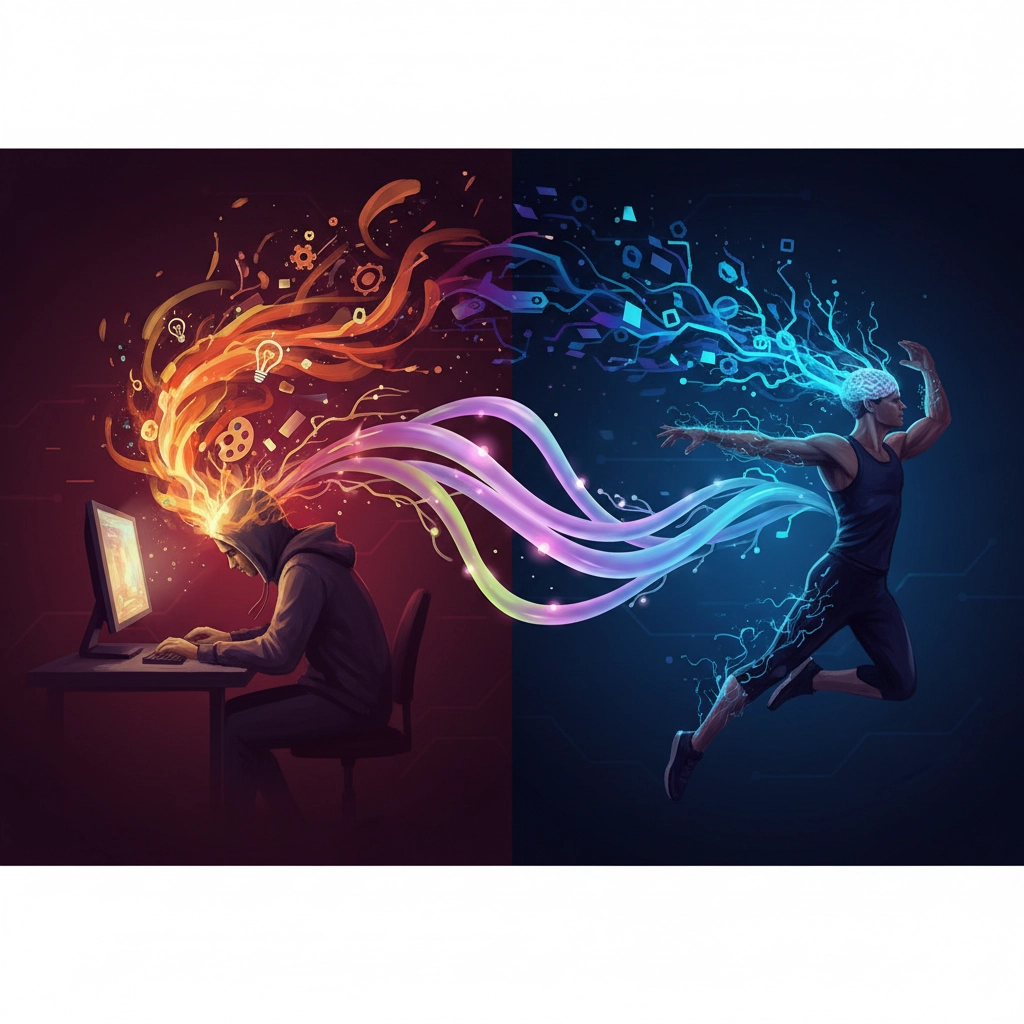
The Science Behind "Whole-Brain" Athletic Performance
Elite athletes don't just use their motor cortex: they engage their entire brain. Neuroplasticity training helps creators develop:
Emotional Intelligence in Competition
Your brain learns to process and regulate emotions in real-time, turning pre-competition anxiety into focused energy.
Intuitive Decision-Making
Beyond conscious analysis, your brain develops "feel" for the right move at the right moment. This is neuroplasticity creating connections between logical and intuitive brain regions.
Creative Problem-Solving
Your existing creative neural networks start connecting with new athletic pathways, leading to innovative solutions other athletes might miss.
Overcoming the Creator-to-Athlete Mental Blocks
The Perfectionist Trap
Creators are used to editing out mistakes. In athletics, mistakes are part of neuroplasticity: your brain learns from errors. Embrace the messy learning process.
Impatience with Physical Progress
Digital creation shows immediate results. Physical transformation takes time. Understanding that your brain is literally rebuilding itself helps maintain patience during plateaus.
Identity Confusion
You're not choosing between being a creator OR an athlete. Neuroplasticity allows you to be both, with each identity strengthening the other.
Advanced Neuroplasticity Hacks
Sleep Optimization
Memory consolidation happens during sleep. Your brain literally rewires during deep sleep phases, so 7-9 hours isn't optional: it's when the real neuroplastic changes occur.
Nutrition for Neural Growth
Omega-3 fatty acids, particularly DHA, support neuroplasticity. Creators transitioning to athletics need both the fuel for training and the building blocks for brain adaptation.
Progressive Overload for the Brain
Just like muscles, neural pathways need progressive challenge. Gradually increase complexity, speed, or decision-making demands in training.
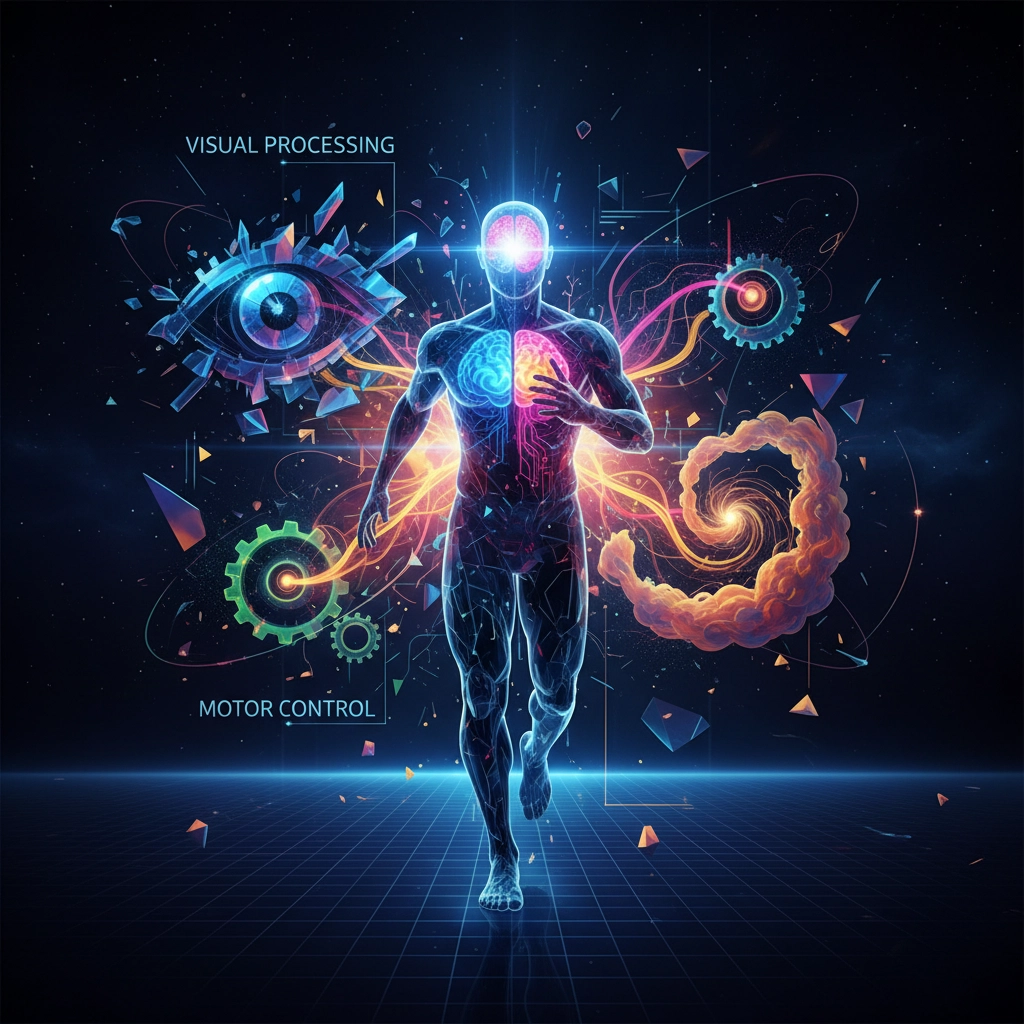
The Long-Term Brain Benefits
The creator-to-athlete transformation powered by neuroplasticity delivers benefits that extend far beyond sports performance. Physical training enhances cognitive function, protects against mental decline, and increases resilience to stress.
Many creator-athletes report improved focus for content creation, better problem-solving abilities, and enhanced creativity: all direct results of neuroplasticity training.
Your Neuroplasticity Action Plan
Ready to start your brain transformation? Here's your week-one protocol:
Days 1-3: Focus on one fundamental movement (could be a basic punch, tennis serve, or sprint start). Practice 15-20 minutes daily, paying attention to every detail.
Days 4-6: Add visualization sessions. Spend 10 minutes mentally rehearsing perfect technique before physical practice.
Day 7: Test day. Practice your movement without conscious thought: let your developing neural pathways take over.
The creator-to-athlete journey isn't just about building muscle or improving cardio. It's about unleashing your brain's incredible capacity for transformation. Every rep, every training session, every moment of frustration is literally rewiring your neural architecture for elite performance.
Your brain transformed you from zero to content creation success. Now it's time to let neuroplasticity transform you from creator to athlete. The neural pathways are waiting to be built: you just need to start laying the foundation.
The best part? This transformation enhances both identities. You don't become less creative by becoming more athletic. You become a more complete performer, leveraging the full power of human neuroplasticity.
Time to build those brain gains.

